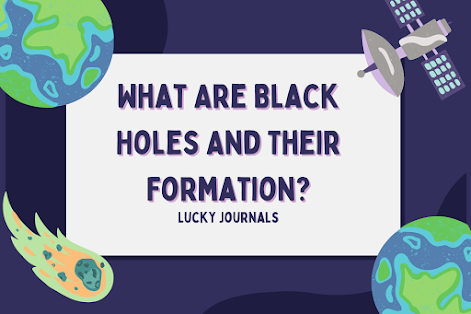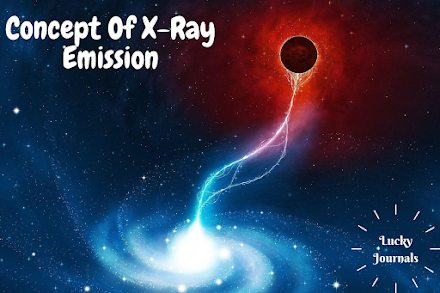- Get link
- X
- Other Apps
- Get link
- X
- Other Apps
Introduction
Hi, guys, I am your Lucky Journals and I will guide you in the entire article. I am bringing you this amazing article with lots of information about black holes and will satisfy all your needs.
Today's topic is Black Hole -The Most Trending Thing In 2021. So fast up your seat belts and go flying up in the air with lots of information.
Key Contents
- Black Hole -The Most Trending Thing In 2021: Event Horizon
- What Are Black Holes And Their Formation?
- Neutron Stars
- Concept Of X-Ray Emission
- Object's Mass And Affects
- Dense High Mass Objects
Black Hole -The Most Trending Thing In 2021Event Horizon
If you’ve caught only one thing about black holes, it’s apparent that, once inside a black hole’s event horizon, emptiness, not even light, can leave. At a point it’s reasonable to question if nothing can leave a black hole, how could we ever perceive them?
How do we even know they exist? Well, only things inside the event horizon are stuck – black holes also gravitationally pull on stuff outside their event horizons.
And by looking at that stuff we can get a really good sense that there’s a black hole nearby. For illustration, lots and lots of stars orbit in braces, but we also see stars orbiting objects that aren’t standard stars.
But instead, emit crazy amounts of x-rays in space and often come from dust and gas that gets superheated while spiralling into a very dense, very heavy object.
What Are Black Holes And Their Formation?
Stars are incredibly massive collections of hydrogen atoms that collapsed from enormous gas cloud under their gravity. In their gist, nuclear fusion breaks hydrogen atoms into helium, publishing an enormous amount of energy.
This power, in the form of radioactivity, pushes against gravity, managing a fragile balance between the two forces. As long as there is a coalition in the core, a star remains steady enough. But for stars with way more quantity then our sun the heat and stress at the core allow them to combine heavier particles until they reach iron.
Unlike all the ingredients that went before, the coalition process that creates iron doesn't produce any energy. Iron mounts up at the centre of the star until it reaches a dangerous amount and the balance between radiation and gravity is abruptly interrupted.
The core collapses. Within a fraction of a second, the star collapse. Travelling at about the region of the speed of light, supplying even more mass into the core. It's at this very instant that all the more onerous particles in the universe are created, as the star dies, in a supernova explosion.
This generates either a neutron star or if the star is heavy enough, the complete mass of the core crumples into a black hole. If you study at a black hole, what you'd be attending is the event horizon. Anything that passes the event horizon needs to be progressing faster than the speed of light to leave. In other words, it's impracticable.
Neutron Stars
Anyhow, by estimating out the mass and orbital properties of the stars whose partners emit x-rays, we can discover how heavy the partners are. Some partners are lightweight enough to be neutron stars.
But neutron stars can only get so huge before they crumple in on themselves – technical considerations put their upper size limit at around 2-3 times the volume of the sun, and the biggest ones we’ve recognised all fall inside that limit.
Concept Of X-Ray Emission
And yet, there are plenty of stars whose orbits clearly show that their x-ray emitting partners are 5-10 times the mass of the sun, and we simply don’t know anything else there could be other than black holes.
Seldom you don’t even need an orbiting star at all, and just the x-rays and tuner waves from the hot infalling matter can be used to determine the mass of a solitary non-star object.
In some instances, they aim out to be neutron stars, but in others, they aim out to be way too bulky, and can only be black holes.
There are also objects at the centres of lots of galaxies (including our own), that emit lots of x-rays, radio waves and infrared radiation, but not much visible light, and we know these things are massively heavy because of the way that nearby stars and hot gleaming flakes orbit them.
Object's Mass And Affects
Certain fields tell us the things are both so massive and so small they can’t probably be a star or bunch of stars or scattered clusters of other intangible matter; the only thing they could be is extraordinary massive black holes.
For instance, in the centre of the Milky Way, there’s an x-ray, radio wave and infrared-emitting thing called “Sagittarius A*” with nearby stars projecting it in such small, fast orbits that we know.
It measures 4 million times as abundant as the sun! And ultimately, we’ve also instantly observed, on multiple occurrences, gravitational waves that were released from the inspiralling contacts of two really heavy dense objects.
Some of those streams have the impression of a dispute between objects and is lightweight enough to be neutron stars.
But different streams could only have come from contacts among objects far too heavy to be anything but sets of black holes coalescing to become single, bigger, black holes.
And in these situations, the features of the wave indications looked exactly like what theoretical black hole collision calculations predict.
Dense High Mass Objects
So, in many different places throughout the universe, we’ve detected highly dense high-mass objects by their gravity – either indirectly via their effect on nearby bright stuff like stars or accumulation plates of gas and dust, or undeviatingly via their gravitational waves.
Any of these dense high-mass things are too dark to be regular stars, too compact and too dark to be clusters of stars, and too heavy to be neutron stars.
They exist, they behave pretty much exactly the way physics predicts black holes would act, and there’s nothing else they could be.I would end this post here and hope that you liked it and got to know about Black Hole. I know that this a little big post but I hope it is worth it. Please comment down the things which you liked and disliked about my post.
One more thing, subscribe to this blog if you don't want to miss such interesting content from my side. I hope you have a nice day.
2021
Black Hole
Dense Mass
Event Horizon
Formation Of Black Holes
Most Trending
Neutron Stars
Object's Mass
X-ray Emission
- Get link
- X
- Other Apps
Comments




<3
ReplyDeleteThank You Sir for your lovely heart. Do subscribe to this blog if you don't want to miss out interesting stuff.
DeleteHey! Do you work at NASA? Because from your post it looks as if you are a professional in this field.
ReplyDeleteKeep it up (•‿•)
Thank You Sir for your lovely review. Do subscribe to this blog if you don't want to miss out interesting stuff.
DeleteYou have rightly said and loved your attracting lines which are full of information
ReplyDeleteThank You Sir for your lovely review. Do subscribe to this blog if you don't want to miss out interesting stuff.
DeleteQuel bon blog informatif
ReplyDeleteMerci Monsieur pour votre belle critique. Abonnez-vous à ce blog si vous ne voulez pas manquer de choses intéressantes.
DeleteYour blogs are also like Black Hole. No one can escape from not reading them.
ReplyDeleteThank You sir it's a very big complement for me. If you like then do suscribe to this blog if you dont want to miss out such interesting content
DeleteI have been checking out a few of your stories and i can state pretty good stuff. I will definitely bookmark your blog zoo token
ReplyDelete